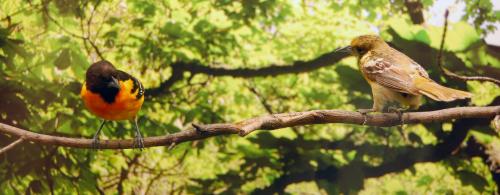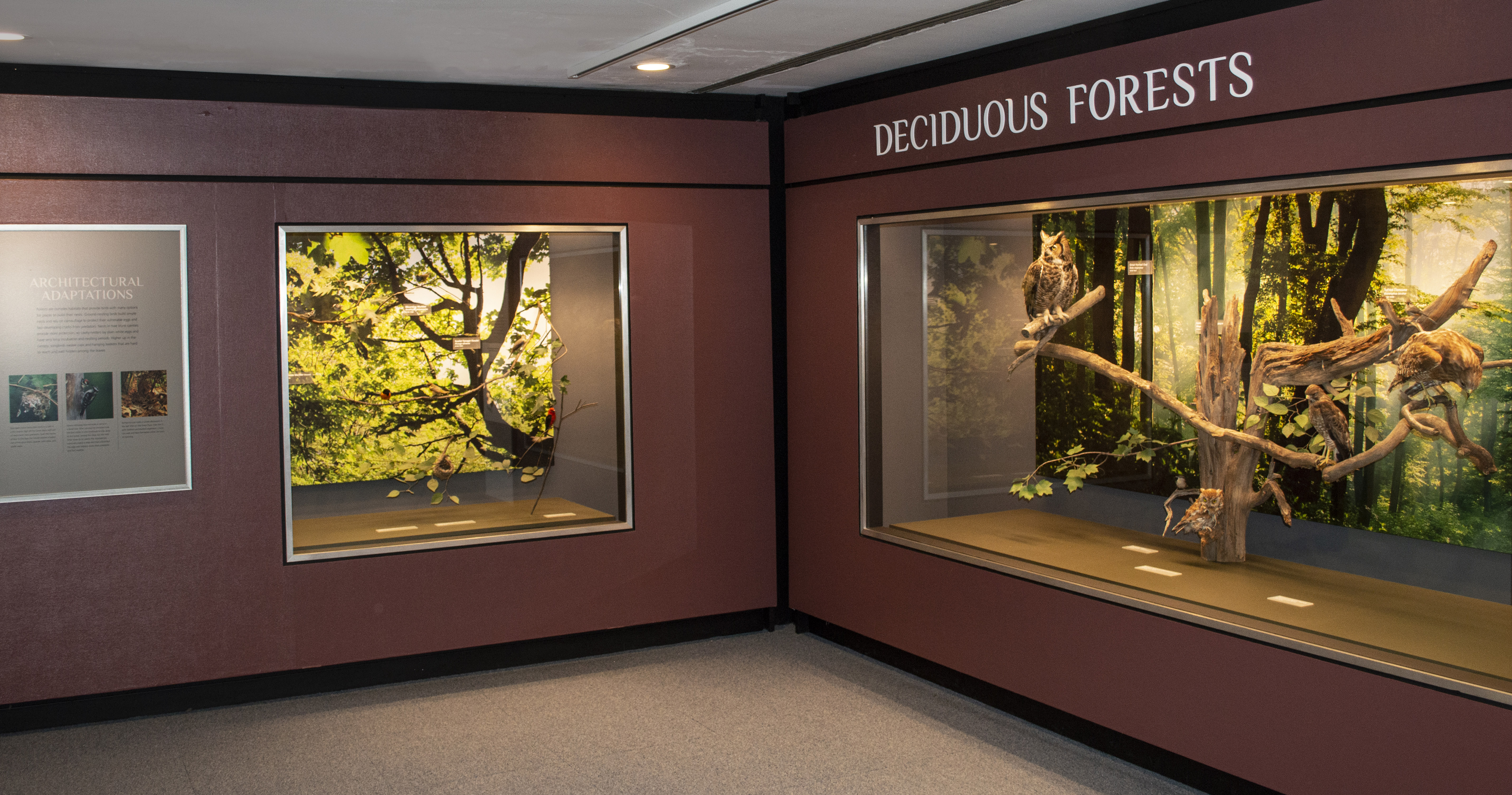Deciduous Forests
Deciduous forests are New York’s most widespread habitat, covering about 45 percent of the land. Allegheny oak forests, maple and birch northern hardwoods, and coastal beech forests are all dominated by broad-leaved trees that shed and regrow their foliage annually, but each has its own distinctive community of resident and migratory bird species.
Almost all of New York’s cultivated land and pastures (covering another 22 percent of the state), was deciduous forest before it was cleared for agricultural use. Extensive reforestation of abandoned farmland and the establishment of forest preserves and managed “working forests” has increased the amount of forested land in New York since the 19th century.



